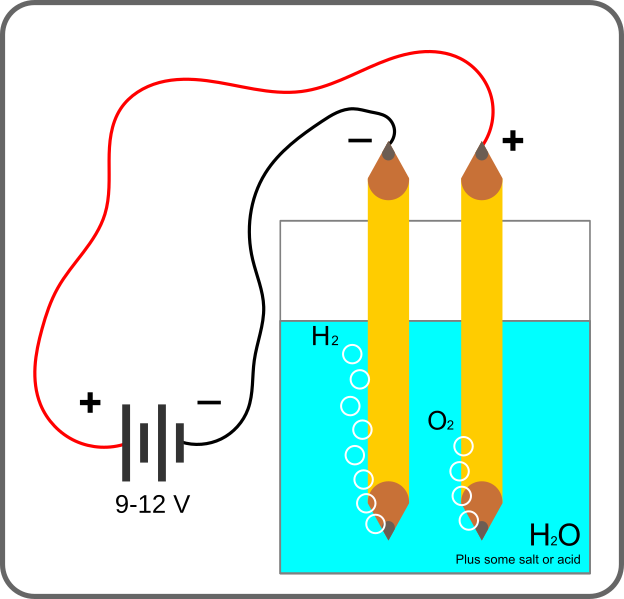Archivo: Electrolysis

Descripción: Simple setup for demonstration of electrolysis of water at home. You will need: A glass of water Two pencils sharpened at both ends Either 9 volt battery or 9-12 V DC adapter. Some bits of wire Tape to fix things together A teaspoon-full of table saltAfter you connect everything, bubbles will form at the tips of pencils immediately. Oxygen gas bubbles (O2) will form at + electrode named anode. Hydrogen gas bubbles H2 will form at - electrode named cathode. The amount will be twice the amount of O2. Pure water is an insulator and the electrolysis may proceed too slowly. Some will say Sulfuric acid or NaSo4 is better, but those are not readily available outside labs. Sulfuric acid is also dangerous to handle. Table salt will suffice for the purpose of this demonstration. Using NaCl as an electrolyte results in some impurity in the form of chlorine gas at anode but that should not be important for the purpose of this demo. Some things to vary: Try stripping the pencil lead (graphite) from the wood to increase the area of contact with water. Try the to see what happens if you vary water temperature.
Título: Electrolysis
Créditos: Trabajo propio
Autor(a): Nevit Dilmen (talk)
Permiso: Puedes usar la licencia que prefieras.
Términos de Uso: Creative Commons Attribution-Share Alike 3.0
Licencia: CC BY-SA 3.0
Enlace de Licencia: https://creativecommons.org/licenses/by-sa/3.0
¿Se exige la atribución?: Sí
Usos del archivo
La siguiente página enlaza a este archivo:

